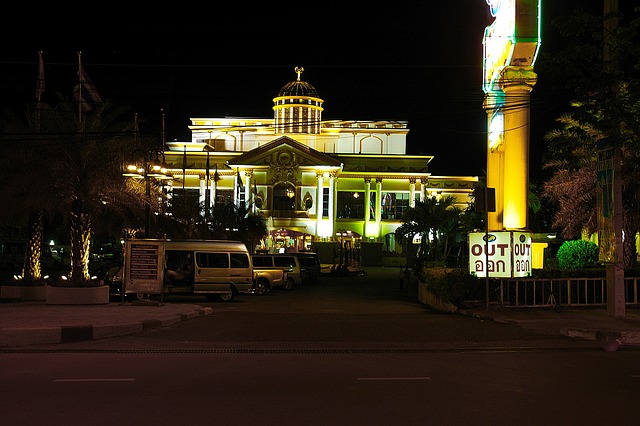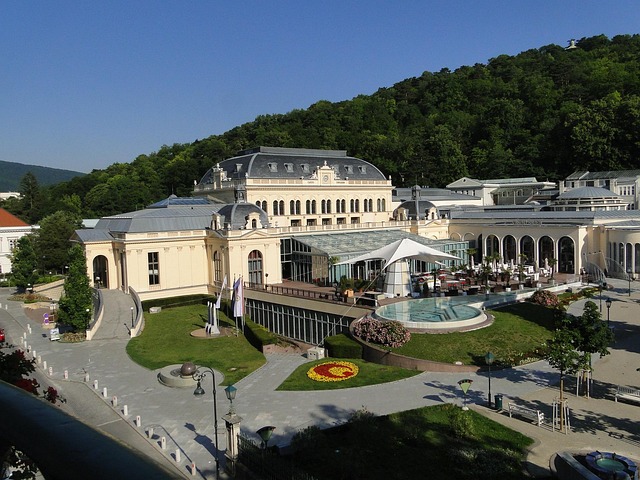Brick and mortar casinos have evolved from exclusive social clubs to diverse entertainment hubs accessible to all, cementing their place as global leisure destinations. Despite online gambling's rise, these physical casinos have adapted by incorporating modern games, technologies, and amenities, ensuring their enduring relevance. Historically significant, they fostered connections, revolutionized entertainment, and impacted economies, with iconic locations like Las Vegas and Monte Carlo's Casino de Monte Carlo setting industry standards for opulence, high-stakes gaming, and immersive experiences that continue to attract global thrill-seekers worldwide.
Explore the captivating world of brick and mortar casinos, where history meets modern innovation. This article delves into the rich past and evolution of these iconic locations, from their humble beginnings to becoming global destinations. Discover the top famous casinos worldwide that have left an indelible mark on the industry. We also gaze into the future, exploring how technological advancements and changing times shape the gaming landscape. Uncover the rise of casino resorts, tech-integrated experiences, and sustainability efforts in a post-pandemic era.
- The History and Evolution of Brick and Mortar Casinos
- – A glimpse into the past: Early casinos and their impact
- – Iconic locations that shaped the industry
The History and Evolution of Brick and Mortar Casinos

The history of brick-and-mortar casinos dates back centuries, evolving from simple gaming establishments to luxurious entertainment hubs. In the early days, these venues were often confined to wealthy areas, serving as social gathering places for high rollers and aristocrats. Over time, with advancements in technology and increased accessibility, casinos started popping up in more diverse locations, catering to a broader demographic. This evolution marked a significant shift from clandestine gambling dens to regulated, licensed gaming spaces that we know today.
The mid-20th century saw the rise of casino resorts, especially along coastal areas and popular tourist destinations, which further solidified their position as entertainment centers. These physical casinos have endured and adapted through the years, incorporating new games, technologies, and amenities to keep pace with changing consumer preferences. Despite the surge in online gambling, brick-and-mortar casinos remain integral to the global gaming industry, offering a tangible, immersive experience that continues to draw players worldwide.
– A glimpse into the past: Early casinos and their impact

In the ancient world, casinos were more than just places for gambling; they were social hubs where empires were made and lost, mirroring the vibrant tapestry of society. From the luxurious gaming salons of Renaissance Italy to the clandestine card rooms of 18th-century France, brick-and-mortar casinos have long captivated the imaginations of folks across cultures. These establishments weren’t merely about luck; they were centers for fostering connections, revolutionizing entertainment, and even influencing local economies.
The legacy of these early casinos continues to resonate today, shaping the very essence of modern gambling. As we navigate the digital age, virtual platforms have undoubtedly enhanced the accessibility of gaming, but brick-and-mortar casinos remain steadfast as iconic landmarks. They offer an unparalleled experience—the rustle of chips, the thrill of a win, and the camaraderie of fellow players—that cannot be replicated online. Thus, these physical spaces stand as a testament to humanity’s enduring fascination with chance, community, and the allure of the unknown.
– Iconic locations that shaped the industry

The evolution of gambling has been significantly shaped by iconic locations that double as landmarks for the industry. Brick and mortar casinos, with their opulent interiors and historic charm, have long attracted thrill-seekers from around the globe. Las Vegas, often dubbed the Entertainment Capital of the World, stands as a prime example. The city’s strip is a testament to the grandeur of these establishments, where glitz and glamour converge with high-stakes games and entertainment galore. Every detail, from the intricate architecture to the world-class acts, contributes to an immersive experience that has redefined the casino culture.
Another notable location is Monte Carlo, Monaco, home to the iconic Casino de Monte Carlo. This grand institution has been a beacon for elite gamblers since its inception in the 1800s. The casino’s luxurious ambiance and exclusive games have made it synonymous with opulence and high-stakes gaming. These iconic locations not only set trends but also serve as inspiration, influencing the design and experience of casinos worldwide, both digital and brick and mortar.
Brick and mortar casinos have evolved significantly over time, from their humble beginnings as small gaming halls to becoming iconic landmarks. These physical gambling spaces not only offer traditional slot machines and table games but also provide an immersive experience that goes beyond digital alternatives. Iconic locations like Las Vegas and Monte Carlo have shaped the industry, attracting millions of visitors annually. As technology advances, brick and mortar casinos continue to adapt, incorporating new technologies and enhancing customer experiences. They remain crucial destinations for both casual gamers and high-rollers alike, offering a social and vibrant atmosphere that digital platforms struggle to replicate.






